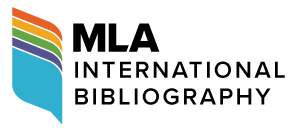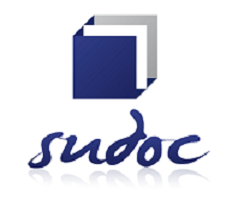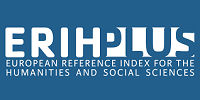« Ce nord désorienté » : geopoetic reading of Abdelaziz Kacem
DOI:
https://doi.org/10.7203/HYBRIDA.7.26657Keywords:
Kacem, geopoetics, space, cartography, geography Abstract
Abstract
This study offers a geopoetic reading of the poetry of Abdelaziz Kacem, a bilingual Tunisian poet. From three collections, namely Le Frontal (1983), L’Hiver des Brûlures (1994) and Zajals (2014), the tunisian scholar goes beyond the classic topographic models, embodied among other things by cartography. He is constantly attempting to blur spatial coordinates, aiming to neutralize polarities, and his poetry gets to establish a new spatiality, hybrid and in constant motion.
 Downloads
Downloads
 References
References
Amilhat Szary, Anne-Laure. (2013). Frontières, penser à la limite. Association des Anciens Élèves de l’ENS-Ulm. https://shs.hal.science/halshs-00817174v1/document
Calame, Claude. (2017). À propos des pratiques divinatoires et de la « raison des signes » en Grèce classique. Mètis. Anthropologie des mondes grecs anciens, (15), 393–410. https://doi.org/10.4000/books.editionsehess.4619
Debray, Régis. (2011). Du bon usage des catastrophes. Éditions Gallimard.
El Gharbi, Jalel. (1999). Abdelaziz Kacem : Les brûlures du frontal. Études Littéraires Maghrébines, (18), 30-33. http://www.limag.com/new/index.php?inc=iframe&file=BulletinsSommaire.htm
Foucault, Michel. (1984). Des espaces autres [Conférence au Cercle d’Études Architecturales, 14 mars 1967]. Architecture, Mouvement, Continuité, (5), 46–49.
Jacob, Christian. (2014). Qu’est-ce qu’un lieu de savoir ? OpenEdition Press. https://books.openedition.org/oep/423?lang=es
Kacem, Abdelaziz. (1983). Le Frontal [préf. Pierre Emmanuel]. Maison tunisienne de l’édition.
Kacem, Abdelaziz. (1994). L’hiver des brûlures. Cérès Éditions.
Kacem, Abdelaziz. (2002). Culture arabe/culture française, la parenté reniée. L’Harmattan.
Kacem, Abdelaziz. (2008). Rives et dérives. Revue de littérature comparée, 3(327), 281–288. https://doi.org/10.3917/rlc.327.0281
Kacem, Abdelaziz. (2014). Zajals. Riveneuve Éditions.
Kassab-Charfi, Samia et Khedher, Adel. (2019). Un siècle de littérature en Tunisie : 1900-2017. Honoré Champion.
Marcel, Gabriel. (1998). Homo viator. Prolégomènes à une métaphysique de l’espérance. Association Présence Gabriel Marcel.
Marzouki, Afifa. (2005). L’Hiver des brûlures de Abdelaziz Kacem ou l’écrivain dans « Les Temps verbicides ». Cahiers de l’Association internationale des études françaises, (57), 393–401. https://doi.org/10.3406/caief.2005.1588
Marzouki, Samir. (2008). Traitement de la monstruosité dans la poésie tunisienne de langue française : Nos Ancêtres les bédouins de Salah Garmadi et L’hiver des brûlures de Abdelaziz Kacem. Monstres. Ponti/Ponts. Langues littératures civilisations des Pays Francophones, (8), 21–32.
Metz, Christian. (1975). Le signifiant imaginaire. Communications, (23), 3–55. https://doi.org/10.3406/comm.1975.1347
Monga, Luigi. (2003). The Unavoidable «Snare of Narrative»: Fiction and Creativity in Hodoeporics. Annali d’Italianistica, 21, 7–45. http://www.jstor.org/stable/24009852
Nancy, Jean-Luc. (2016). L’occident est-il un accident ?. In Christian Doumet et Michaël Ferrier (Dir.). Penser avec Fukushima. Cécile Defaut (Editions). https://lesordesor.hypotheses.org/815
Pascal, Blaise (1904). Pensées, Tome II [Introduction et notes par Léon Brunschvicg]. Librairie Hachette et Cie.
Richard, Jean-Pierre. (1976). Poésie et profondeur [1955]. Éditions du Seuil.
Richard, Jean-Pierre. (1979). Microlectures. Éditions du Seuil.
Soja, Edward. (1989). Postmodern Geographies : The Reassertion of Space in Social Theory. Verso.
White, Kenneth. (1994). Le Plateau de l’albatros. Introduction à la géopoétique. Éditions Grasset et Fasquelle.
Published
How to Cite
-
Abstract244
-
HTML (Français )152
-
PDF (Français )133
Issue
Section
License
All the documents in the OJS platform are open access and property of their respective authors.
Authors publishing in the journal agree to the following terms:
- Authors keep the rights and guarantee HYBRIDA the right to be the first publication of the document, licensed under a Creative Commons license Attribution-NonCommercial-ShareAlike 4.0 International (CC BY-NC-SA 4.0) that allows others to share the work with an acknowledgement of authorship and publication in the journal.
- Authors are allowed and encouraged to spread their work (once published) through electronic means using personal or institutional websites (institutional open archives, personal websites or professional and academic networks profiles) once the text has been published.

















